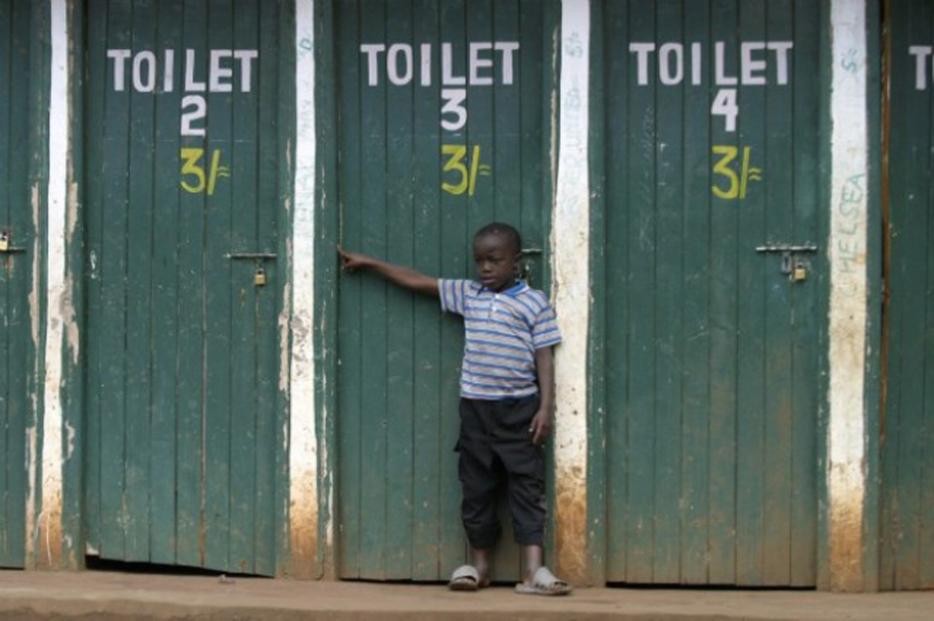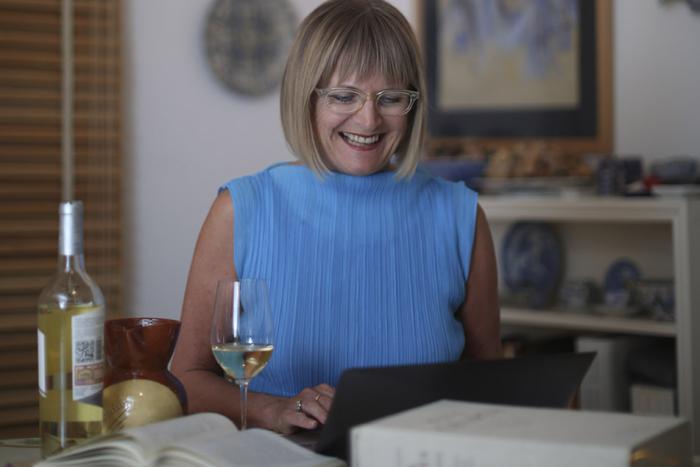When Phiona Mutesi got to her hotel room, everything was new to her: the luxurious bed, the remote control for the television, the air-conditioning. And, of course, the toilet. “She flushed it over and over, fascinated by how the water spun and disappeared. ‘I could never have imagined this place I was visiting,’ Phiona says. ‘I felt like a queen.’”
Mutesi, the fourteen-year-old Ugandan chess prodigy in Tim Crothers’ The Queen of Katwe: a Story of Life, Chess, and One Extraordinary Girl’s Rise from an African Slum, is eleven years old when she sees her first flush toilet on a trip to a tournament in Sudan, and without her exceptional talent for chess, it is unlikely that she would ever have seen one. In Crothers’ descriptions of Katwe, the Kampala slum where Mutesi lives, the lack of infrastructure for waste disposal is a recurrent theme: “The slum is often so severely flooded that many residents sleep in hammocks suspended just beneath their roofs to avoid drowning. Raw sewage runs through trenches beside the alleyways of the slum and floods carry it inside people’s shacks. The human waste from neighboring downtown Kampala is also dumped directly into Katwe. There is no sanitation service. Flies are everywhere.” In other words, shit happens, everywhere, all the time. And when shit gets into the water supply, it can lead to cholera, typhoid, hepatitis, amoebic dysentery, and diarrhea (which the World Health Organization identifies as the second leading cause of death worldwide for children under five—about 1.5 million every year).
If you missed celebrating World Toilet Day on November 19th, you should know that you missed a chance to cozy up to Bill Gates. “Four out of 10 people worldwide don’t have a safe way to poop,” says a cheery tagline on the Bill and Melinda Gates Foundation website. “Find out why we need a toilet revolution!” In August, the foundation held a Reinvent the Toilet Fair in Seattle, where they announced the winners of a challenge they extended to universities in 2011 to come up with a toilet design for developing countries. One of the UN’s Millennium Declaration goals is to get toilets to 1.75 billion more people worldwide by 2015, and the standard Western toilet is hardly a model of efficiency: each flush uses about nineteen litres of water, which is more than most people in developing countries use in a day. Designers taking up the Gates Foundation’s challenge had to produce a toilet that has none of the things we associate with toilets in the West: no piped water, sewers, or electricity. Furthermore, it had to turn poop into energy or water at a low cost. Three universities went home with prizes: the California Institute of Technology, where researchers came up with a solar-powered toilet that produces both electricity and hydrogen; the UK’s Loughborough University, with a commode that makes biological charcoal, minerals, and clean water; and the University of Toronto, with a design that disinfects feces and urine and recovers clean water.
The challenges of providing toilets to slums like Katwe, however, aren’t purely technological. Sanitation systems are just that—systems, which depend on cooperation between multiple layers of government, landowners, and tenants. In a 2011 interview on NPR’s Science Friday, Rose George, the author of The Big Necessity: The Unmentionable World Of Human Waste And Why It Matters, explained, “You can’t really be imposing sewers in a slum, for example, or composting toilets because nobody’s—no authority is going to want to install infrastructure in a slum because that would automatically imply that people have land rights.” Often the communities that spring up on marginal land have shaky legal standing, and governments sometimes raze them if they decide the land could be put to use in a way that generates more revenue.
It’s also difficult to organize sanitation when tenancy is unstable. It’s common for people who live in slums to be shifting constantly from shack to shack as they regularly fail to make rent. When Phiona Mutesi returned from the 2010 Chess Olympiad in Siberia, where she played as the second most highly ranked player on the national women’s team (it was the first time Uganda had ever funded its women’s chess team to attend this regular international tournament), she found that her family had been evicted yet again. Her mother, Harriet, was two months behind on the rent. Crothers writes that the media attention Mutesi’s skill had attracted only made the landlords more hardhearted: “when the landlords discovered that mzungu [white people] from America had visited Harriet’s shack with their notepads and cameras, the landlord believed that Harriet must have some money. When Harriet insisted she did not, the family was tossed out.” The money Mutesi had saved from her stipend at the Olympiad was just enough to get the family into another shack.
In a 2010 study on sustainable sanitation for urban slums in Uganda, researchers found: “Operation and maintenance of the shared toilets... is done by landlords, who reside in the affluent areas in Kampala and often outside the country and mainly aim at maximizing profit from rent.” And because they’re constantly getting kicked out of where they live, tenants like Harriet don’t have much incentive to invest in sanitation facilities either. Also, in areas where low-tech solutions (like Nairobi’s quaintly named “flying toilets,” aka plastic bags full of shit that you throw wherever you can) are the norm, it’s hard to convince people to change their behaviour.
The solution, many argue, is to marshal the power of consumerism. Frank Rijsberman, the director of water sanitation and hygiene at the Gates Foundation, believes that the toilet needs to become an aspirational product; “the cell phone of sanitation,” as he likes to say. (As the New York Times recently noted, more people in the world have cell phones than toilets.) On the University of Waterloo’s Centre for Society, Technology and Values site, economist Cameron Shelley remarks that one way to spur demand would be to “[of]fer the toilets in a range of designs, from the simplest and cheapest to the fanciest and most expensive. The fancier toilets would be the rare, aspirational items, with the simpler, cheaper ones serving as ‘gateway’ loos.” It’s tough to picture people like Mutesi’s mother scraping together enough money for even the simplest toilet, but facilities in slums like Katwe are almost always shared—one gateway toilet might be enough to give a street an air of prosperity that would shame other streets into acquiring their own.
There is a toilet in China made of solid gold. It’s flanked by gold wastebaskets and a diamond-encrusted scrub brush, and tourists jostle to see it gleam. The toilet’s late owner, Lam Sai-wing, built it to commemorate his hero, Vladimir Lenin, who said that after the victory of communism, they should use gold to build public toilets. “This would be the most ‘just’ and most educational way of utilizing gold for the benefit of these generations,” Lenin said. A few generations later, it’s no longer a sniffy comment about what gold is worth; now it’s a glowing comment about the value of toilets.
--
Photo by Noor Khamis





